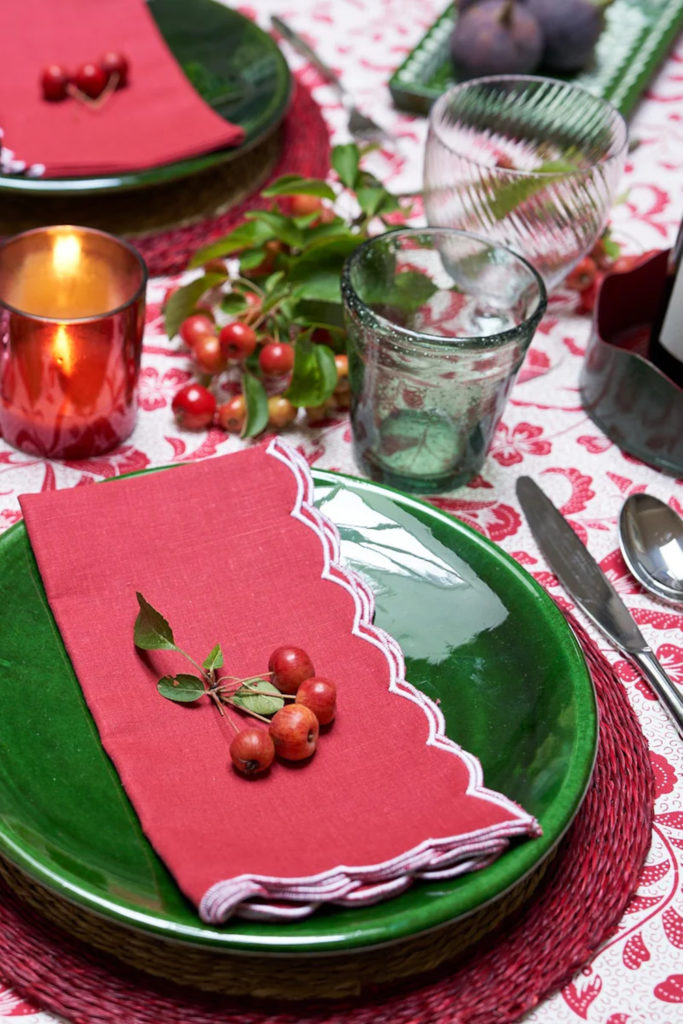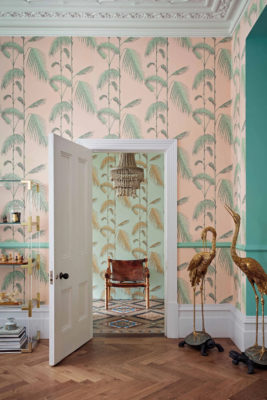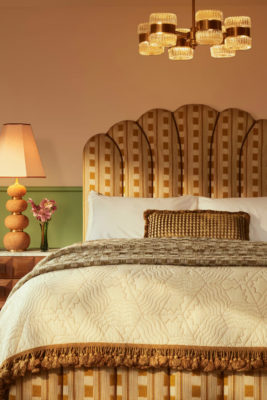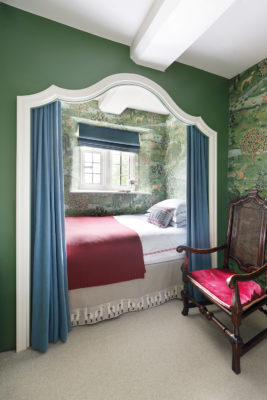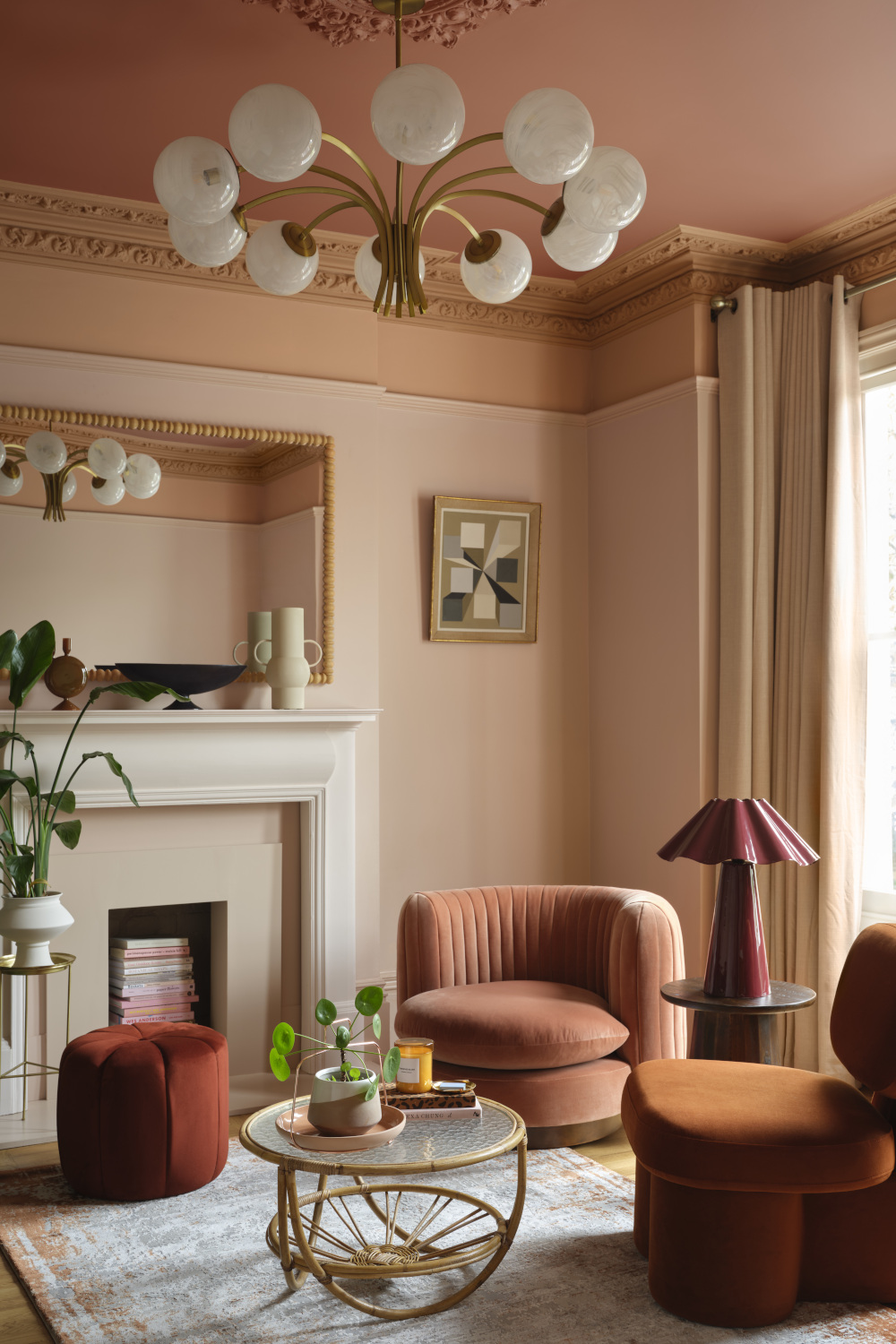
Why Designers Think Colour Capping Will Be 2026’s Biggest Paint Trend
By
1 hour ago
How to cap off your interior design plans in style
Grand plans for 2026? If a fresh lick of paint is in order, then leave a spot on your mood board for the biggest design trend of the year: colour capping. Here’s how to get the look.
What Is Colour Capping?
‘Colour capping involves enveloping a space in a tonal wash that gradually deepens the further up it goes, incorporating the often-overlooked fifth wall – the ceiling – into the design,’ explains Helen Shaw, International Director of Marketing at paint manufacturer Benjamin Moore. The look, as Helen told us, starts with a base colour, which is applied to the walls of the room, and then the gradient tips into adjacent, darker shades as it moves up to the ceiling – adding extra shades in between to account for any panels, cornices or skirting.
It’s being dubbed ‘a clever way to achieve a high-end look with just a few tins of paint’, Helen adds. ‘And as people seek more personalisation and a sense of comfort in their homes, colour capping offers the perfect vehicle. It adds depth and nuance to an otherwise simple palette and is also a great way to build colour confidence.’
How Does It Differ From Other Paint Trends?
Colour capping presents another dopamine-inducing paint trend that we can’t help but want to try – but don’t get it mixed up with the likes of colour drenching or blocking.
‘Unlike colour drenching, which uses a single hue across all surfaces, colour capping plays with multiple tones from the same colour family to achieve a layered, polished effect,’ emphasises Helen.
Colour blocking, meanwhile, is known for bringing together contrasting or complementary colours for a bold look. Colour capping, in contrast, pulls its palette from one singular colour family. ‘By painting the ceiling in the deepest shade, the cornicing in a mid-tone and the walls in a lighter tone it creates a subtle sense of cohesion and understated elegance.’

Benjamin Moore
Colour Shy? Not For Long
If the thought of steering away from a steady palette of whites and creams fills you with dread, think again. Colour capping is probably one of the tamer experimental paint trends of 2026, as it relies on creating a harmonious gradient. There’s no need for sunny yellows, primary blues or ketchup reds here; you can work your way across soft pastels, moody tones and even neutrals if you find them the most appealing.
‘As colour capping involves working with tones from the same colour family, the risk of clashing is low so even those who are a bit colour-shy can experiment safely,’ encourages Helen. ‘Ease yourself in by starting with neutrals such as creams and off whites and choose slightly deeper versions for the cornices and ceilings, keeping the look subtle yet adding a bit of interest.’
Which Colours Work Best?
As we mentioned before, there isn’t one colour set that you must stick to – the beauty of colour capping is that it can be personalised to anyone’s taste.
You can fall back on tried-and-tested neutrals – ‘an off-white wall colour can be capped with a slightly more saturated hue in the same tone, gently drawing attention to the ceiling as an integral part of the décor’ – try something slightly different – ‘soft or light hue for walls, moving into a mid-tone for cornicing and just below, topped by a full tone warm terracotta ceiling, for an instantly pulled-together, cocooning feel’ – or go all out – ‘think bold, knocked-back jewel tones or a palette of warming earth tones, ranging from buff through to rust’ – with your choice of palette.

Benjamin Moore
Which Rooms Are Ideal For Colour Capping?
Any room, really. Colour capping lends itself well to all spaces of the home, since it can be either dialled back or amped up with specific hues. A living room can be the optimal canvas for bolder colour combinations, as the central hub of the home, and utilising deeper shades for the bedroom can help nail that coveted ‘cocooning’ effect.
Smaller rooms can also benefit, as the technique helps draw the eye up the wall to the ceiling – creating a space that looks and feels bigger than it is. (It’s also a good place to experiment, says Helen: ‘You can always try this technique in a smaller space in the home before committing to a main room.’)
Expert Tips: How To Get The Colour Capping Look At Home
Decide On The Room
First things first: decide where to lick your paint. ‘When creating the colour capping look at home, consider what room it will work best in,’ says Helen. ‘Colour capping works beautifully in living rooms and bedrooms because it enhances the sense of intimacy and comfort these spaces demand. By carrying colour onto the ceiling in a slightly deeper tone, the room feels cocooned and inviting, perfect for relaxation.’
Consider Texture & Current Features
It’s also worth bearing in mind how your paint will work within the current space. ‘In older properties, it can highlight architectural features such as cornices and picture rails whereas in newer or more minimalist spaces, it adds dimension, making flat surfaces feel more dynamic and visually interesting,’ notes Helen. ‘It should feel modern, yet timeless, – a finish that both flatters the architecture and makes even the most compact room feel more expansive.’
Pick Your Palette
‘The key to achieving the look is to stay within the same tonal family,’ emphasises Helen. ‘If your walls are a soft cream or warm grey, choose a slightly richer hue from the same spectrum for the ceiling.’ Remember, the goal is to achieve a smooth flow of colour.
Avoid Colour Clashes
This means no contrasting colours are allowed. ‘Avoid using clashing colours or strong contrasts that lack harmony,’ advises Helen. ‘The transition between wall and ceiling shades should feel intentional and cohesive, not accidental or mismatched. Opt for tones within the same colour family or hues that naturally complement each other on the colour wheel to ensure the look feels balanced and considered.’
Interiors Inspiration: Colour Capping
View this post on Instagram
View this post on Instagram
View this post on Instagram
View this post on Instagram
View this post on Instagram



